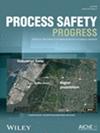大坝紧急情况群体警报系统的可靠性:淡水河谷公司案例研究
IF 1
4区 工程技术
Q4 ENGINEERING, CHEMICAL
引用次数: 0
摘要
淡水河谷公司是巴西最大的矿业公司,也是全球市值第四大的矿业公司,在其铁矿石业务中,有 77 座大坝被认为在稳定性控制失效的情况下具有高潜在破坏性。这种分类遵循巴西部门监管机构的标准,并确定对于这种等级的大坝,有必要在法律规定的区域内,考虑模拟洪水区域,为大坝下游的居民和工人建立大规模警报系统。对于淡水河谷来说,大坝紧急情况集体警报系统是业务风险分析中关键的缓解控制措施的一部分,将假定的大坝决堤视为不希望发生的重大事件。因此,按需故障概率、虚假故障概率和这一保护屏障的资产可用性都是这方面的重要因素,同时也是应急响应计划和洪水区域疏散模拟的重要因素,这些都是需要持续验证和不断改进的风险管理系统的一部分。目前,淡水河谷有 375 个警报器,计划到 2024 年底达到 420 个警报器。本文旨在介绍这些系统的安全概念是如何形成的、这项研究中应用的良好做法,以及从 2019 年布鲁马迪尼奥大坝决堤引发的大坝应急管理中吸取的经验教训。文章还介绍了相关系统的可靠性分析、造成安全临界不可用的主要原因,以及减少维护时间和提高系统可用性的结果。本文章由计算机程序翻译,如有差异,请以英文原文为准。
Reliability in mass alert system for dam emergencies: Case study of Vale S/A
In its iron ore operations, Vale, the largest mining company in Brazil and the fourth largest mining company in the world by market value, has 77 dams considered with high potential damage in case of a failure in the stability controls. This classification follows the criteria of the sector regulatory agency in Brazil and determines that, for this class, a mass alert system is necessary for the resident population and workers immediately downstream of the dam within a region preset by legislation, considering a simulated flood area. For Vale, the mass alert system for dam emergencies is part of a critical mitigating control for a business risk analysis considering the hypothetical dam break as an unwanted material event. Therefore, both the probability of failure on demand, spurious failure, and availability of the assets of this protection barrier are important elements for this purpose, as well as the emergency response plan and the evacuation simulation of flood areas, which are part of a risk management system that require continuous verification and continuous improvement. Currently, Vale has 375 sirens, and it is planned to reach 420 sirens by the end of 2024. The purpose of this article is to present how the safety concepts applied to these systems were developed, the good practices applied from this study, and the lessons learned from the dam emergency management arising from the break of the Brumadinho dam in 2019. The reliability analyses of the systems involved and the main contributors to the Safety Critical Unavailability are presented, as well as the results of the reduction in the maintenance time and increase in system availability.
求助全文
通过发布文献求助,成功后即可免费获取论文全文。
去求助
来源期刊

Process Safety Progress
工程技术-工程:化工
CiteScore
2.20
自引率
10.00%
发文量
99
审稿时长
6-12 weeks
期刊介绍:
Process Safety Progress covers process safety for engineering professionals. It addresses such topics as incident investigations/case histories, hazardous chemicals management, hazardous leaks prevention, risk assessment, process hazards evaluation, industrial hygiene, fire and explosion analysis, preventive maintenance, vapor cloud dispersion, and regulatory compliance, training, education, and other areas in process safety and loss prevention, including emerging concerns like plant and/or process security. Papers from the annual Loss Prevention Symposium and other AIChE safety conferences are automatically considered for publication, but unsolicited papers, particularly those addressing process safety issues in emerging technologies and industries are encouraged and evaluated equally.
 求助内容:
求助内容: 应助结果提醒方式:
应助结果提醒方式:


